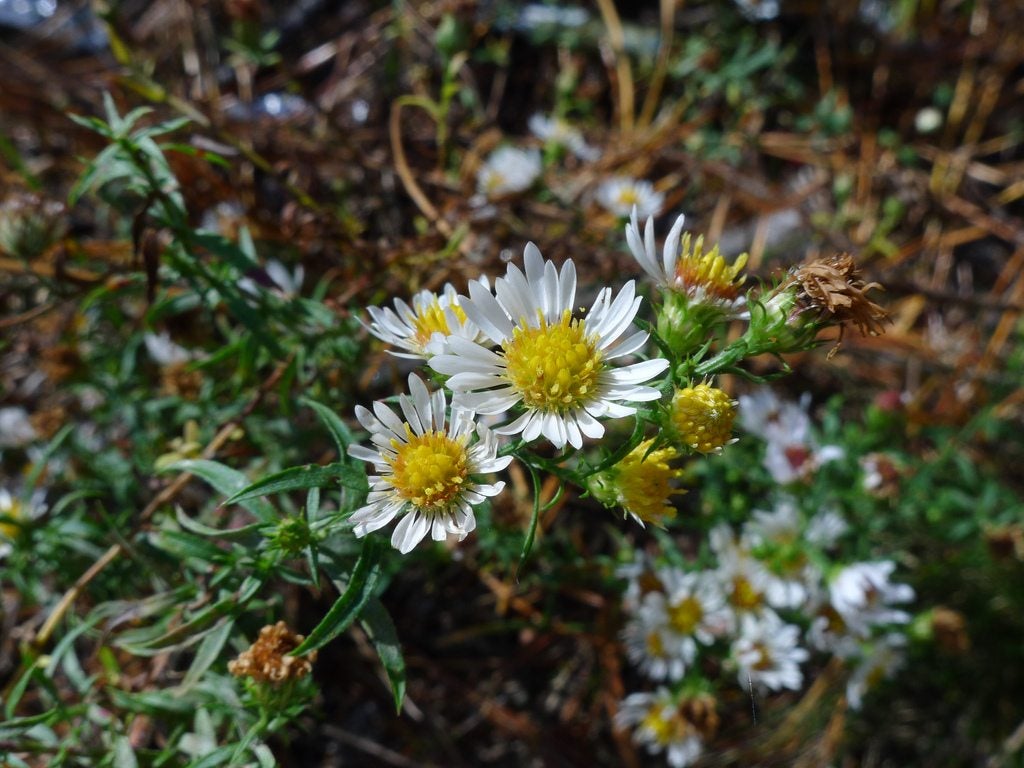Bushy Aster Care – Learn How To Grow Bushy Aster Plants


More and more, American gardeners are turning to native wildflowers to provide easy-care beauty in the backyard. One you might want to consider is bushy aster (Symphyotrichum dumosum) for pretty, daisy-like flowers. If you don’t know much about bushy aster plants, read on for additional information. We’ll also provide some tips on how to grow bushy aster in your own garden.
Bushy Aster Information
Bushy aster, also called American aster, is a native wildflower. It grows in the wild in New England down through the Southeast. You’ll find it on the coastal plains, as well as in woodlands, grasslands, meadows, and fields. In some states, like Alabama, bushy aster plants are most often seen growing in wetlands, like bogs and swamps. They can also be found on riverbanks and beside streams. According to bushy aster information, the shrubs grow to about 3 feet (1 m.) tall and are vigorous and attractive when blooming. Bushy aster flowers consist of strap-shaped petals growing around a central disk and look something like small daisies. These plants can grow white or lavender flowers.
How to Grow Bushy Aster
If you are thinking of growing bushy aster, you shouldn’t have much trouble. These native aster plants are often grown as garden ornamental for their interesting foliage and small flowers. The plants are sun lovers. They prefer a site where they get a full day of direct sun. They also like moist, well-draining soil where they spread quickly thanks to their vigorous, woody rhizomes. Growing bushy aster plants in your backyard is not difficult. You’ll end up with flowers from summer through fall, and bushy aster flowers attract pollinators like bees. On the other hand, when the plants are not in bloom, they are less attractive and can look weedy. One way to combat this is to try growing bushy aster dwarf cultivars. These thrive in U.S. Department of Agriculture plant hardiness zones 3 through 8. The cultivar 'Woods Blue' produces blue flowers on short stems, while ‘Woods Pink' and 'Woods Purple' offer compact bushy aster flowers in pink and purple on stems to 18 inches (0.5 m.) tall.
Gardening tips, videos, info and more delivered right to your inbox!
Sign up for the Gardening Know How newsletter today and receive a free copy of our e-book "How to Grow Delicious Tomatoes".

Teo Spengler is a master gardener and a docent at the San Francisco Botanical Garden, where she hosts public tours. She has studied horticulture and written about nature, trees, plants, and gardening for more than two decades. Her extended family includes some 30 houseplants and hundreds of outdoor plants, including 250 trees, which are her main passion. Spengler currently splits her life between San Francisco and the French Basque Country, though she was raised in Alaska, giving her experience of gardening in a range of climates.
-
 Get Ready For A Summer Of Hummers! Grow These Full Sun Hummingbird Plants and Flowers
Get Ready For A Summer Of Hummers! Grow These Full Sun Hummingbird Plants and FlowersIf you’re lucky enough to enjoy a sunny backyard, make sure you are maxing out on your pollinator opportunities and grow these full sun hummingbird plants and flowers
By Tonya Barnett
-
 12 Lush Alternatives To A Lawn For Sustainable Spaces
12 Lush Alternatives To A Lawn For Sustainable SpacesAlternatives to a lawn are beautiful and also beneficial to your local ecosystem and its pollinators. Explore our top picks for plants to replace grass.
By Tonya Barnett